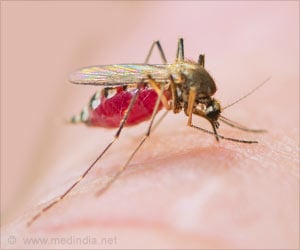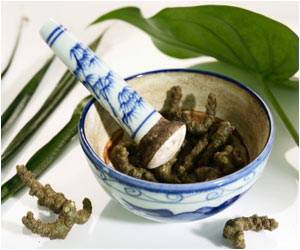Extract from chestnut leaf, rich in ursene and oleanene derivatives, that blocks Staphlococcus aureus virulence and pathogenesis without detectable resistance.

"We've identified a family of compounds from this plant that have an interesting medicinal mechanism," Quave says. "Rather than killing staph, this botanical extract works by taking away staph's weapons, essentially shutting off the ability of the bacteria to create toxins that cause tissue damage. In other words, it takes the teeth out of the bacteria's bite."
The discovery holds potential for new ways to both treat and prevent infections of methicillin-resistant S. aureus, or MRSA, without fueling the growing problem of drug-resistant pathogens.
Antibiotic-resistant bacteria annually cause at least two million illnesses and 23,000 deaths in the United States, according to the Centers for Disease Control and Prevention. MRSA infections lead to everything from mild skin irritations to fatalities. Evolving strains of this "super bug" bacterium pose threats to both hospital patients with compromised immune systems and young, healthy athletes and others who are in close physical contact.
"We've demonstrated in the lab that our extract disarms even the hyper-virulent MRSA strains capable of causing serious infections in healthy athletes," Quave says. "At the same time, the extract doesn't disturb the normal, healthy bacteria on human skin. It's all about restoring balance."
Quave, who researches the interactions of people and plants - a specialty known as ethnobotany - is on the faculty of Emory's Center for the Study of Human Health and Emory School of Medicine's Department of Dermatology. She became interested in ethnobotany as an undergraduate at Emory.
Advertisement
Hundreds of field interviews guided her to the European chestnut tree, Castanea sativa. "Local people and healers repeatedly told us how they would make a tea from the leaves of the chestnut tree and wash their skin with it to treat skin infections and inflammations," Quave says.
Advertisement
The researchers steeped chestnut leaves in solvents to extract their chemical ingredients. "You separate the complex mixture of chemicals found in the extract into smaller batches with fewer chemical ingredients, test the results, and keep honing in on the ingredients that are the most active," Quave explains. "It's a methodical process and takes a lot of hours at the bench. Emory undergraduates did much of the work to gain experience in chemical separation techniques."
The work produced an extract of 94 chemicals, of which ursene and oleanene based compounds are the most active.
Tests showed that this extract inhibits the ability of staph bacteria to communicate with one another, a process known as quorum sensing. MRSA uses this quorum-sensing signaling system to manufacture toxins and ramp up its virulence.
"We were able to trace out the pathways in the lab, showing how our botanical extract blocks quorum sensing and turns off toxin production entirely," Quave says. "Many pharmaceutical companies are working on the development of monoclonal antibodies that target just one toxin. This is more exciting because we've shown that with this extract, we can turn off an entire cascade responsible for producing a variety of different toxins."
A single dose of the extract, at 50 micrograms, cleared up MRSA skin lesions in lab mice, stopping tissue damage and red blood cell damage. The extract does not lose activity, or become resistant, even after two weeks of repeated exposure. And tests on human skin cells in a lab dish showed that the botanical extract does not harm the skin cells, or the normal skin micro-flora.
The Emory Office of Technology Transfer has filed a patent for the discovery of the unique properties of the botanical extract. The researchers are doing further testing on individual components of the extract to determine if they work best in combination or alone.
"We now have a mixture that works," Quave says. "Our goal is to further refine it into a simpler compound that would be eligible for FDA consideration as a therapeutic agent."
Potential uses include a preventative spray for football pads or other athletic equipment; preventative coatings for medical devices and products such as tampons that offer favorable environments for the growth of MRSA; and as a treatment for MRSA infections, perhaps in combination with antibiotics.
"It's easy to dismiss traditional remedies as old wives' tales, just because they don't attack and kill pathogens," Quave says. "But there are many more ways to help cure infections, and we need to focus on them in the era of drug-resistant bacteria."
Source-Eurekalert












